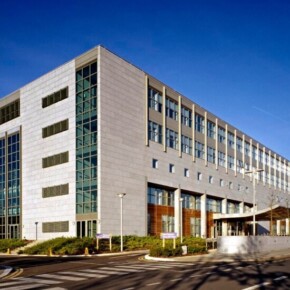Uisce Éireann announce completion of new Saggart reservoir
Dublin People 04 Oct 2024
Uisce Éireann has announced the completion of a new €59 million reservoir in Saggart.
The key piece of infrastructure is part of a €118 million portfolio of projects undertaken by the utility aimed at enhancing the security and resilience of the water supply across the Greater Dublin Area (GDA).
Uisce Éireann has also concluded the construction of a €29 million crucial trunk watermain from Ballycoolin Reservoir to Swords in North Dublin. This will transfer up to 90 million litres of water a day to North Dublin and will support existing and future residential developments as well as large institutional and commercial entities including local hospitals and Dublin Airport. Uisce Éireann has also committed €30 million to further enhancement works at Leixlip Water Treatment Plant. This third phase is aimed at increasing the resilience and capacity of Ireland’s second largest water treatment facility. The upgrade, once completed, will add 63 million litres of water per day back into the network.
Speaking at the Saggart Reservoir, the Minister for Housing, Local Government and Heritage Darragh O’Brien, said: “the size and scale of the task to improve water services for a modern growing economy shouldn’t be underestimated. The reservoir, alongside the Ballycoolin and Leixlip projects, underscores Uisce Éireann’s and the Government’s commitment to water and developing Ireland’s infrastructure to ensure the country can remain an attractive location to live and do business.”
Minister O’Brien added, “These projects will play a key role in supporting housing and industry across the GDA. It will also help futureproof our water supplies as we face challenges that are likely to be presented by factors such as population growth and climate change.”
The project in Saggart includes a new covered water storage reservoir, equivalent in size to 40 Olympic swimming pools, and associated pipelines. It now has the capacity to store 100 million litres of treated drinking water produced at Ireland’s largest water treatment plant in Ballymore Eustace.
Speaking about the reservoir project Jessica Dale, programme manager with Uisce Éireann said: “To improve how this Goliath structure fits snugly into the landscape and enhance biodiversity, we have carefully designed and planted the roof of the reservoir, spanning an area three times the size of Croke Park, with wildflowers.”
Jessica continued, “This project is one of several critical investments across Dublin to deliver transformative water services, providing a more robust, resilient water supply to meet current and future demands”.
Uisce Éireann chief operations officer Eamon Gallen said: “the old reservoir in Saggart was built in the 1950s and served the people of Dublin well for over 70 years. This new reservoir is state of the art. It will benefit more than 650,000 people across Dublin, Kildare, Wicklow and Meath. Coffey Construction completed the works to the highest possible standards and installed the most up to date technology.
However, Eamon highlighted, “while all of the works underway and completed for the GDA are positive and critical in terms of securing supplies in the short to medium term, what the country needs to ensure water security into the future is The Water Supply Project for the Eastern and Midlands Region.”
“Our dependence on the river Liffey leaves us vulnerable to risks such as prolonged drought and/or contamination. This critical national infrastructure project will support water supply needs for up to 50% of our population. It will bring treated water from the Parteen Basin to Peamount in Dublin with the capacity for offtakes along the route in Tipperary, Offaly and Westmeath. It will also enable supplies serving Dublin to be redirected back locally in Carlow, Wicklow, Meath and Louth.”











